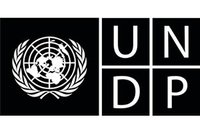What is microlearning?
Microlearning: A pedagogical approach suited to development programs
If you know anything about Catalpa’s approach to education and skills training, you’ll know we’re big advocates for microlearning pedagogy.
In fact, we think it’s so well suited to remote, low-resourced communities that we designed and created Bero, a best practice microlearning platform for these contexts.
But what exactly is microlearning, and how does it improve learning outcomes?
What is microlearning?
Microlearning is a pedagogical approach that delivers learning content in short - but focused - lessons that can be completed anywhere, anytime.
Courses take up to twenty minutes to complete, and extraneous content is removed to focus only on what is truly important.
The approach’s flexibility makes it especially suitable for low resourced and hard-to-reach communities, and its compact delivery means it pairs with mobile learning particularly well.
Microlearning can be undertaken through a range of different platforms but is best experienced on a fit-for-purpose mobile learning platform built specifically for the learner and their context - like Catalpa's Bero platform.
The key benefits of using microlearning include:
- better retention of concepts
- better engagement for learners
- improved motivation for learners
- engagement in collaborative learning; and
- improved learning ability and performance
Sometimes microlearning is referred to as ‘just in time’ learning, as learners can easily tap into courses on-the-go. This works well for job-embedded professional development contexts where courses focus on specific tasks and learners can refresh their memory as needed.
Is it effective?
Studies have shown participants in microlearning programs are able to demonstrate competence in bite-sized elements of instruction, and then combine these skills to demonstrate mastery in more complex skills.
Microlearning has also been shown to have positive effects on the knowledge and confidence of learners in studying, performing procedures, retaining knowledge, and engaging in collaborative learning.
Microlearning is an effective way to make learning subjects easy to understand and memorable for longer periods of time. In one study, when compared with traditional modes of learning, microlearning groups showed around 18% better learning than the traditional group.
We love microlearning for its concise delivery and suitability to accessible mobile devices.
Learn more about how we’ve applied this approach using Bero in Papua New Guinea, Cook Islands, Samoa, Solomon Islands, Vanuatu and beyond.
______________________
Want to see microlearning in action? Check out Bero, our specialised mobile learning platform making learning accessible anywhere, anytime.
References & further reading
De Gagne JC, Park HK, Hall K, Woodward A, Yamane S, Kim SS. (2019). Microlearning in Health Professions Education: Scoping Review. JMIR Medical Education.
Leong, K. Sung, A. Au, D. Blanchard, C. (2020). A review of the trend of microlearning. Journal of Work-Applied Management.
Luminita, G. (2017). Microlearning, an evolving trend. Scientific Bulletin - Nicolae Balcescu Land Forces Academy.
Mohammed, GS., Wakil, K., Nawroly, SS. (2018). The Effectiveness of Microlearning to Improve Students’ Learning Ability. International Journal of Educational Research Review.














